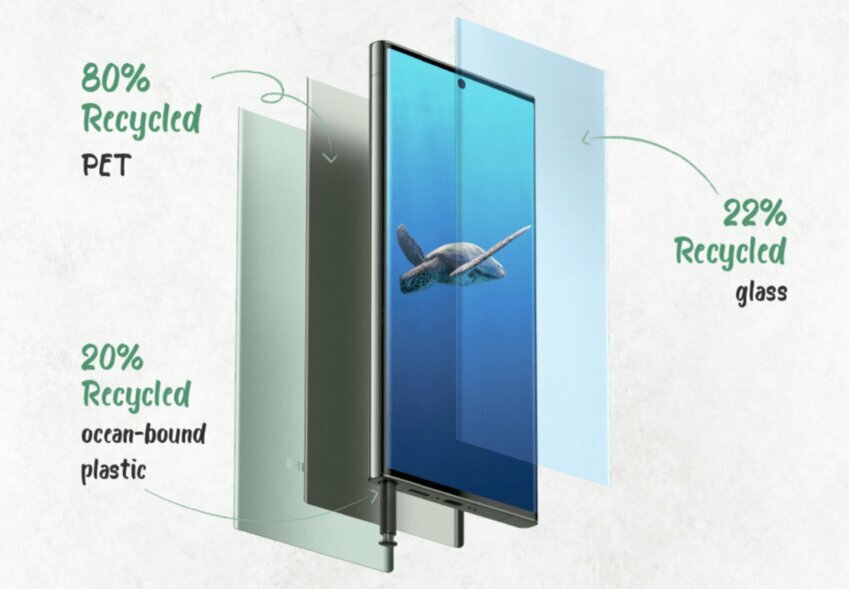 (Credit: Samsung)
(Credit: Samsung)Samsung has introduced the high-performance and sustainable Galaxy S23 series, designed to lower electronic waste. Keeping sustainability in mind, Samsung incorporated recycled materials in more device components than in any other previous Galaxy smartphone and designed the packaging box using 100% recycled paper. The presence of recycled materials in the Galaxy S23 series has also increased, rising from six internal components made from recycled materials in the Galaxy S22 Ultra to 12 internal and external components incorporating recycled materials in the Galaxy S23 Ultra.
Samsung also used a wider variety of recycled materials, including pre-consumer recycled aluminum and glass. Specifically, the use of recycled ocean-bound plastics in the Galaxy S23 series could prevent more than 15 tons of discarded fishing nets from entering the world’s oceans by the end of 2023, helping to reduce ocean pollution.
This will be the first device to feature Corning Gorilla Glass Victus 2, which offers durability for long-term use and contains an average of 22 percent pre-consumer recycled content.
The UN Environment Program (UNEP) found that a record 53.6 million metric tons of electronic waste were generated in 2019. By 2030, it predicts that global e-waste will nearly double to reach 74 million metric tons, driven by increased consumption of electric and electronic equipment that has “short life-cycles and few options for repair.”
Currently, Apple leads the smartphone space when it comes to the overall approach towards sustainability, according to Counterpoint Research’s latest report, “Smartphones and Circular Economy: Creating a Sustainable Future.” The report assesses how well the OEM is reducing its impact on the environment by reusing materials, recycling devices, and minimizing waste at each stage. The report also encompasses corporate-level initiatives, progress on carbon neutrality, and SDG 13 (one of the 17 Sustainable Development Goals adopted by the United Nations).
The Smartphone Circular Economy Report Scorecard includes a metric system that evaluates the top five smartphone OEMs globally. Each OEM has its own vision and overall approach toward sustainability. Apple’s vision is leading the way.